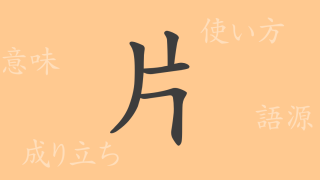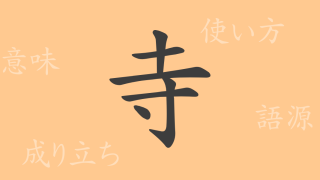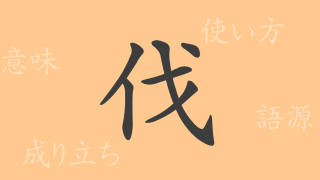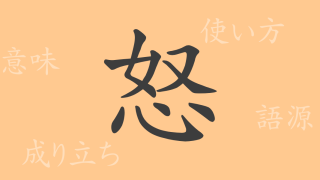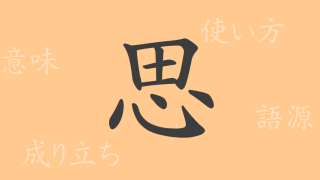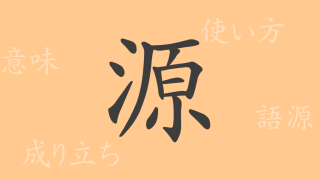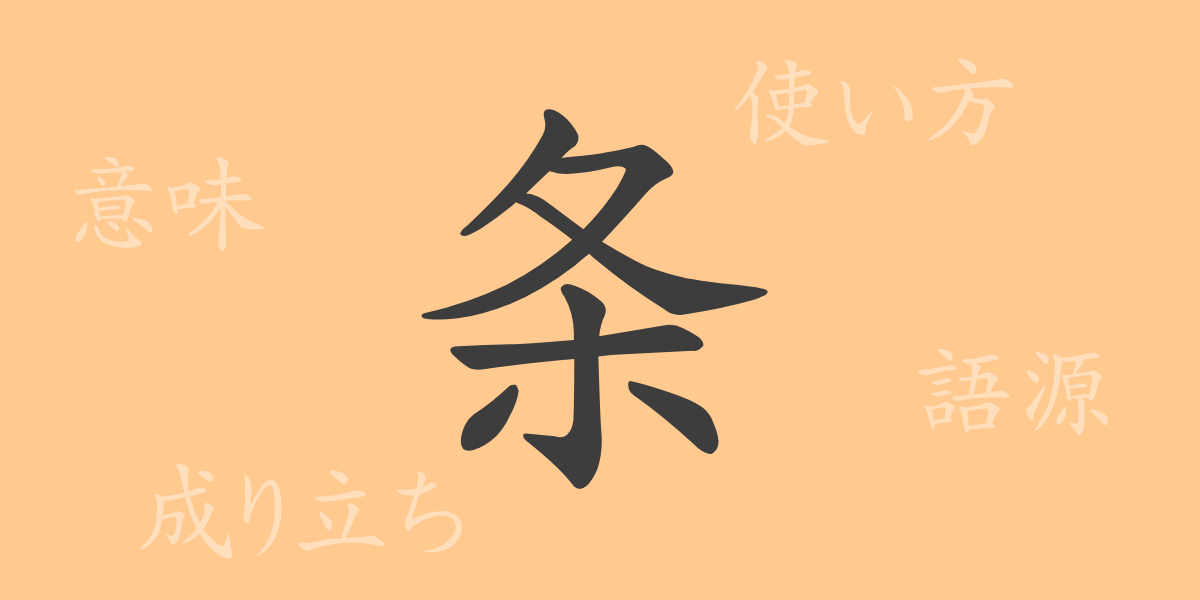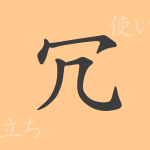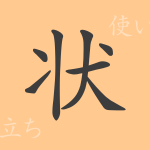The kanji character “条(じょう)” plays a central role in Japanese script, evoking thoughts of laws and regulations while being used in various forms in daily life. This article delves into the origins, meanings, and usages of “条,” as well as related phrases and proverbs, offering a comprehensive exploration of this character.
Origins of 条(じょう)
The kanji “条” originated in ancient China, related to the use of bamboo strips. These strips, split longitudinally from bamboo, were used to record writings and documents. This shape came to symbolize orderliness and regularity, and “条” evolved to denote order and items within a list.
Meaning and Usage of 条(じょう)
The kanji “条” encompasses meanings such as “a part of something,” “item,” and “section of a law or rule.” It is commonly used in legal documents and contracts as “条項”(じょうこう) for clauses, or to denote a part of something as in “一条”(いちじょう). It also appears in contexts like “条件”(じょうけん), indicating prerequisites or criteria necessary for an action.
Readings, Stroke Count, and Radical of 条(じょう)
- Readings: On’yomi (音読み) “ジョウ,” Kun’yomi (訓読み) “えだ” among others.
- Stroke Count: 7 strokes.
- Radical: 木部(きへん) – related to wood or tree.
Phrases and Proverbs Using 条(じょう) and Their Meanings
Phrases and proverbs that include “条” reflect its semantic range:
- “法条”(ほうじょう) – Legal clause.
- “条件”(じょうけん) – Conditions or criteria.
- “条約”(じょうやく) – Treaty, a formal agreement between states.
- “一条の光”(いちじょうのひかり) – A ray of hope. Finding a glimmer of hope in difficult situations.
- “十条の草”(じゅうじょうのくさ) – Many matters or issues, referring to a wide range of topics.
These idioms and phrases showcase how “条” is utilized in Japanese, reflecting the character’s meanings in various contexts.
Conclusion on 条(じょう)
The kanji “条” often signifies structured order and rules, appearing frequently in formal documents like laws and contracts. It also appears in everyday conversation, denoting parts of objects or conditions, showcasing its versatile application. Understanding the rich meanings and usages of “条” deepens our grasp of Japanese language and culture.







